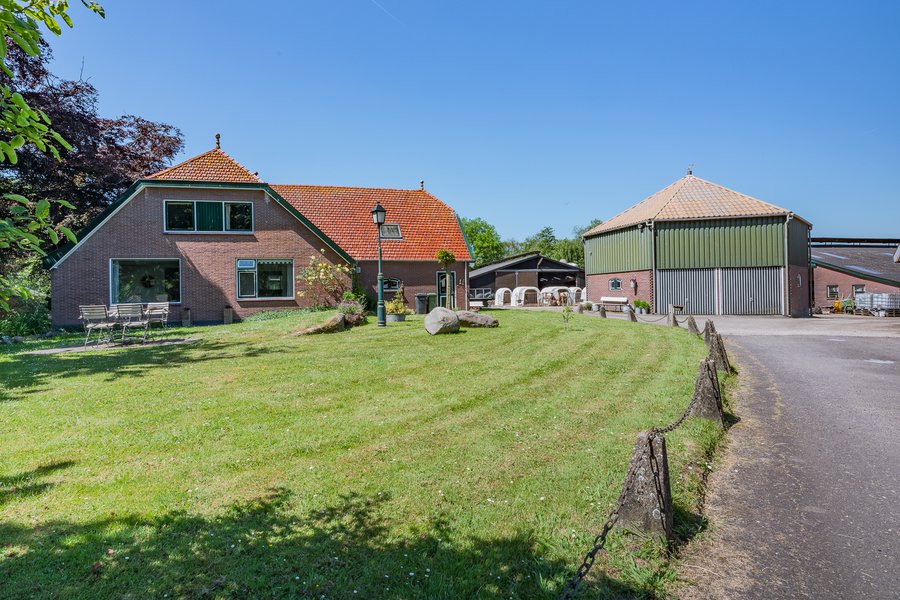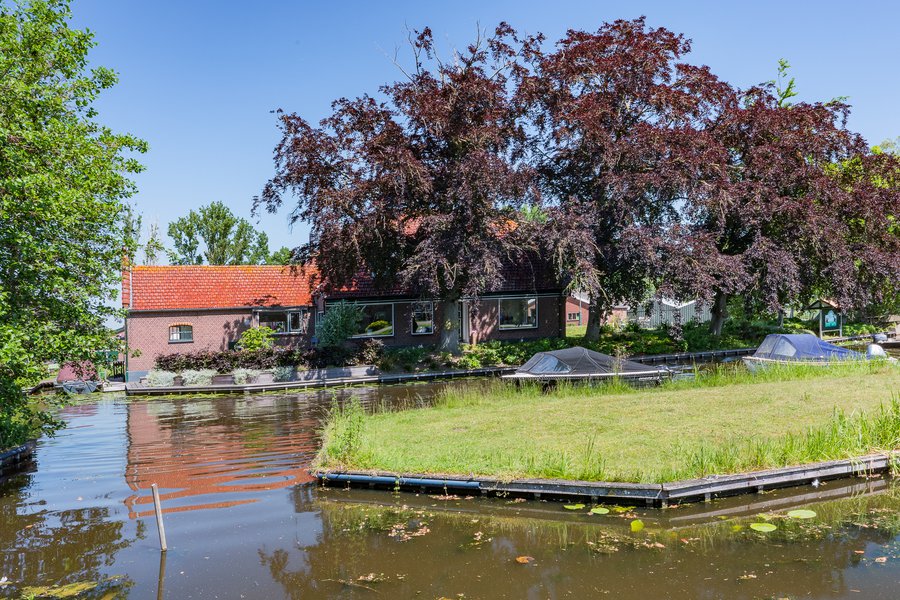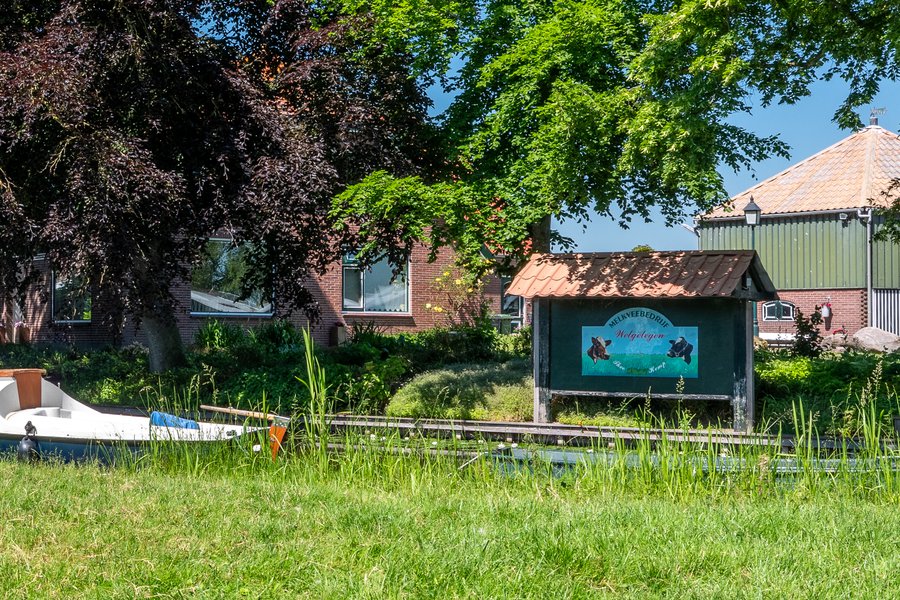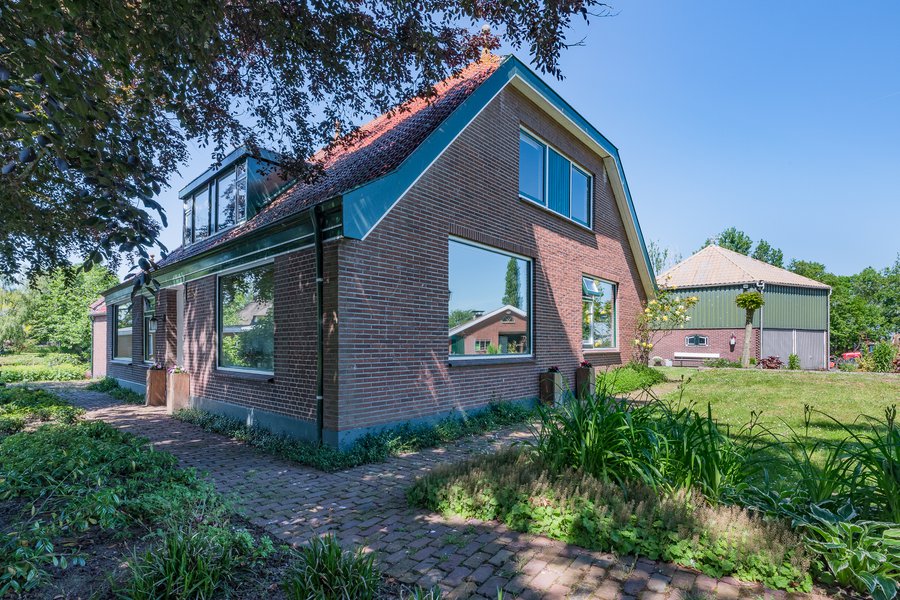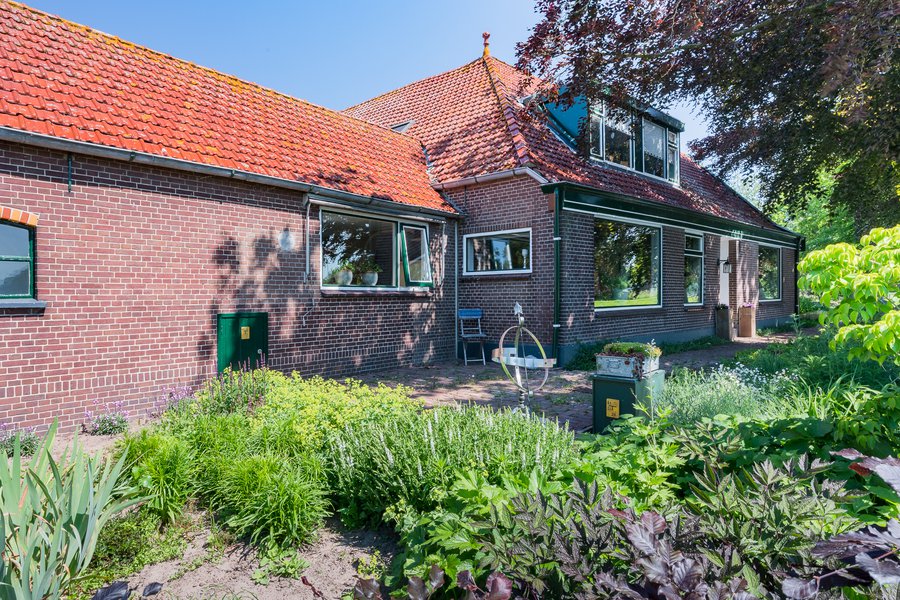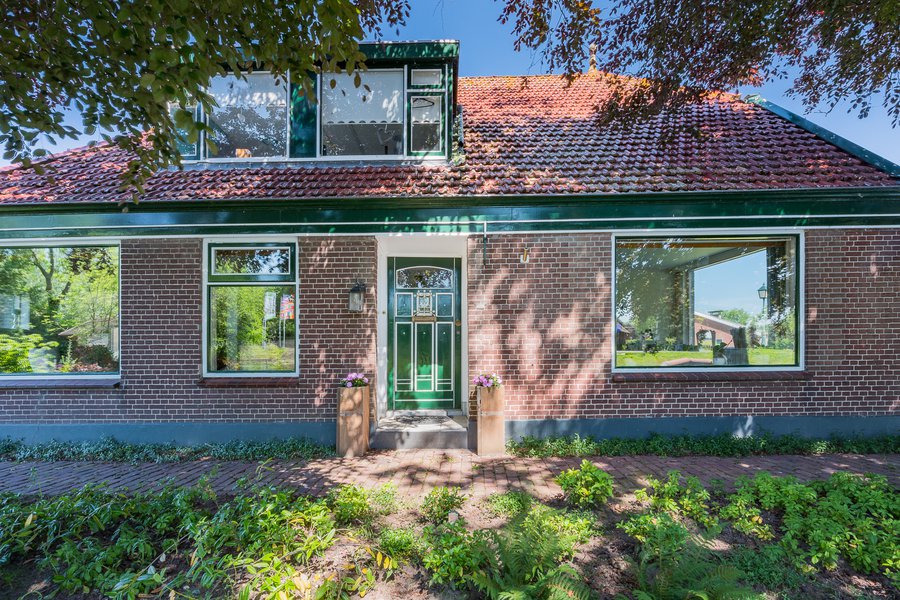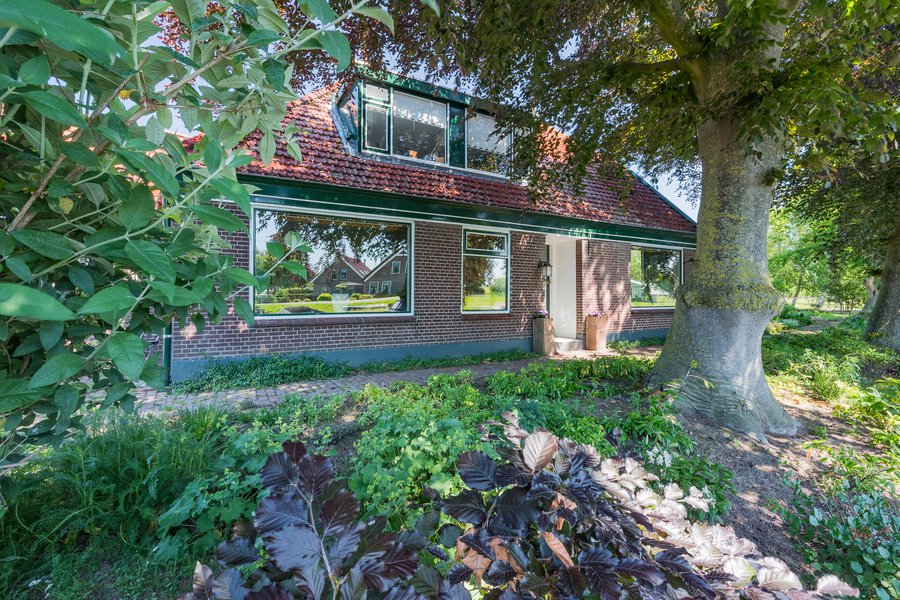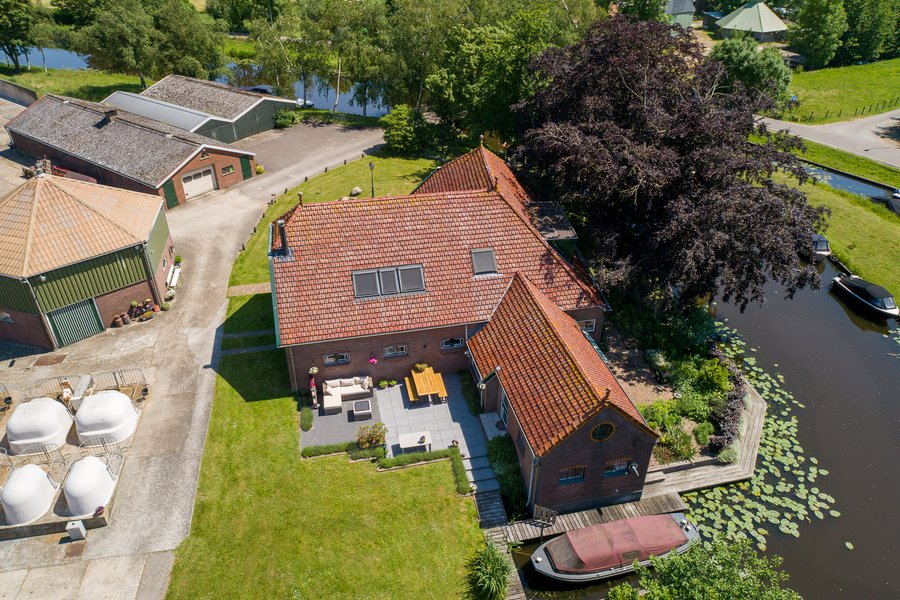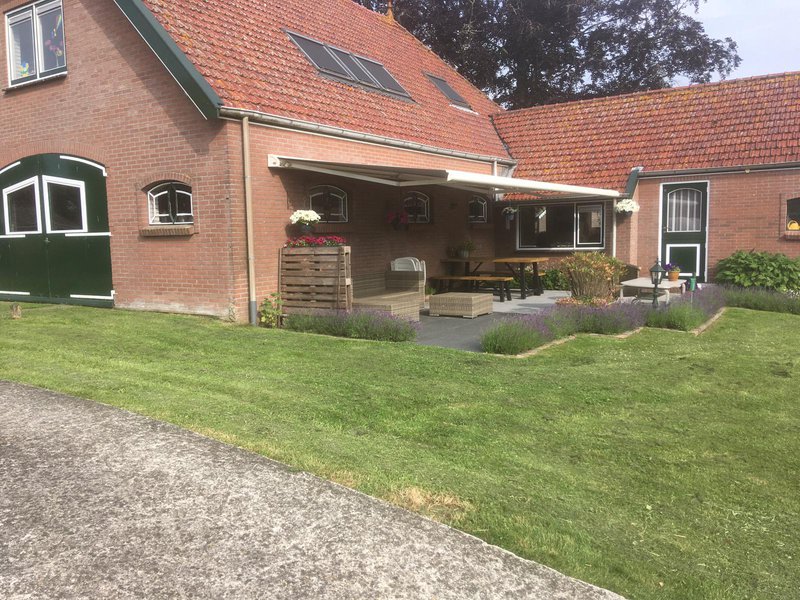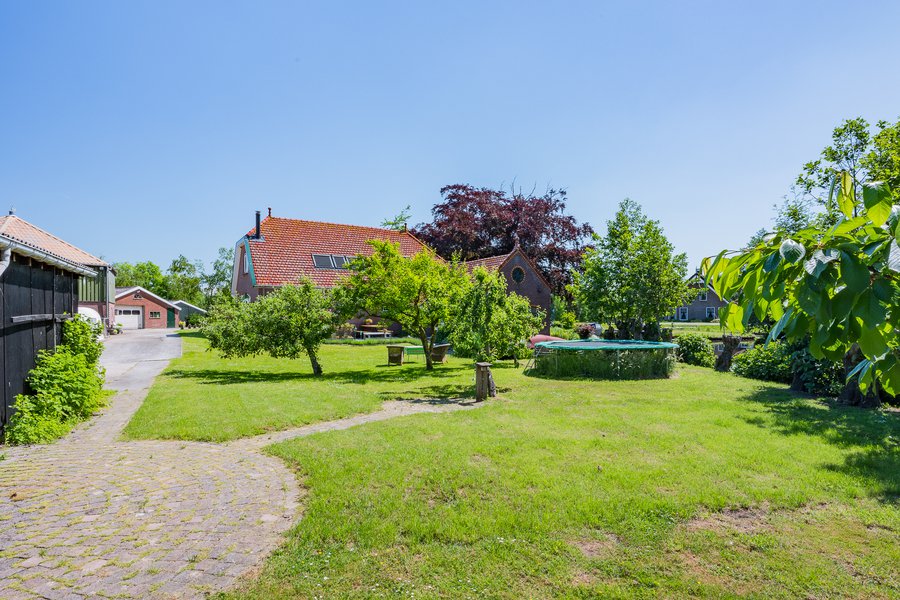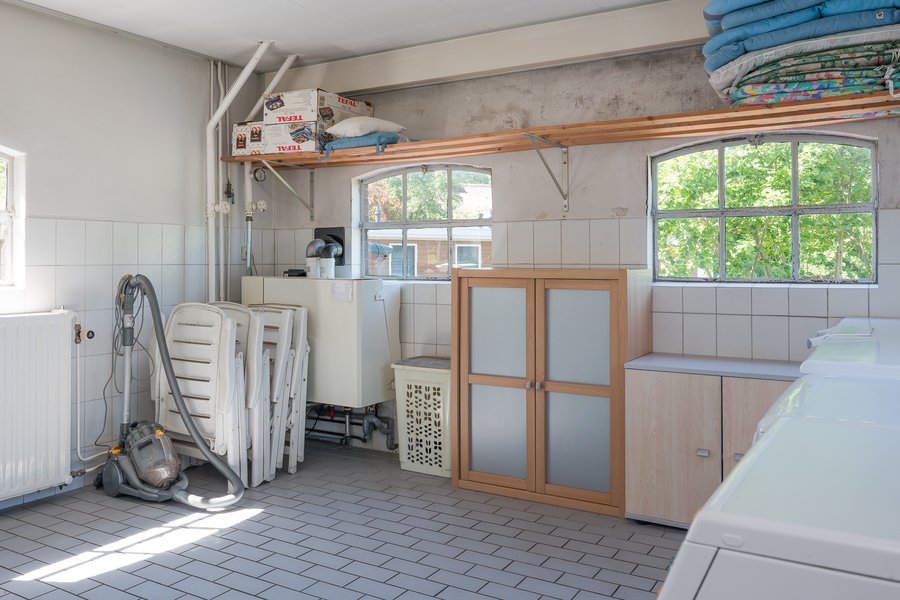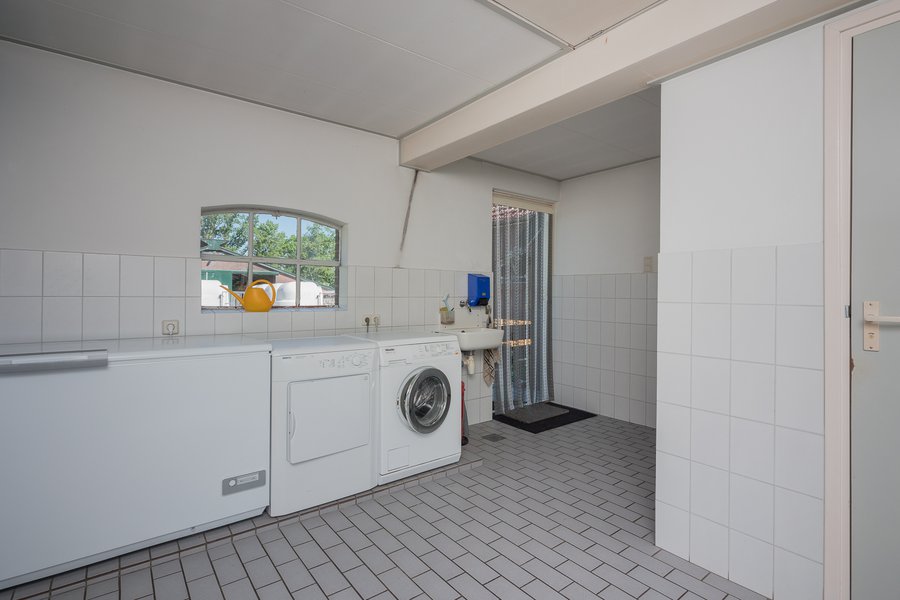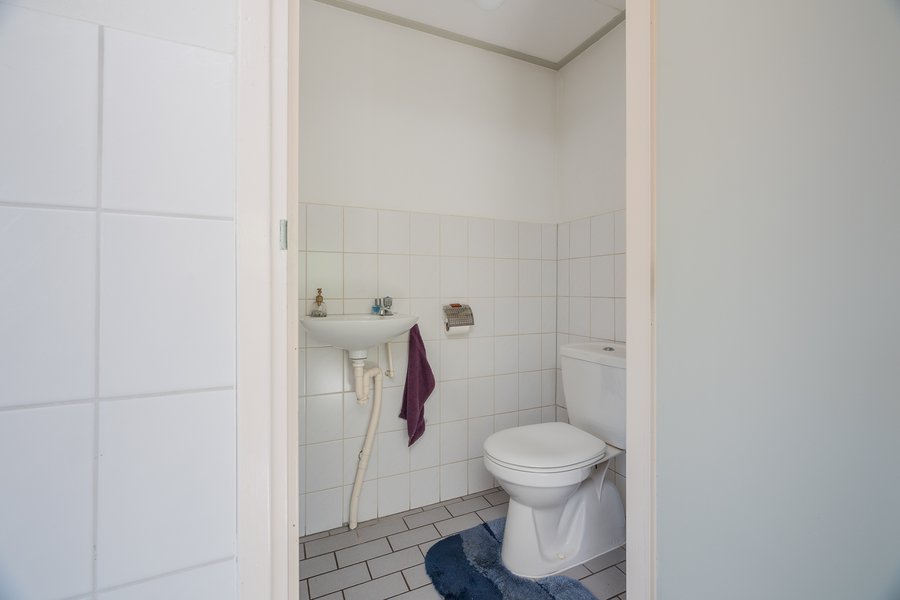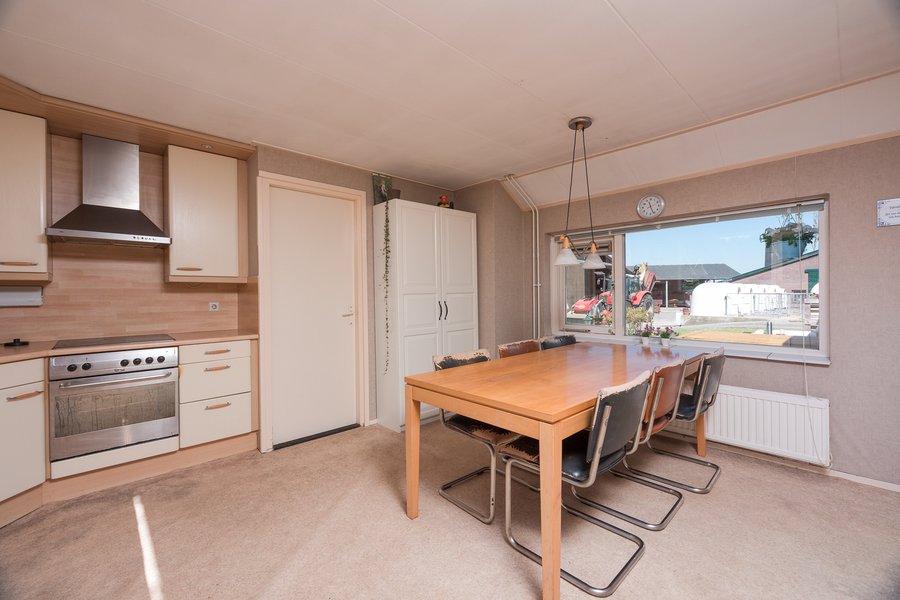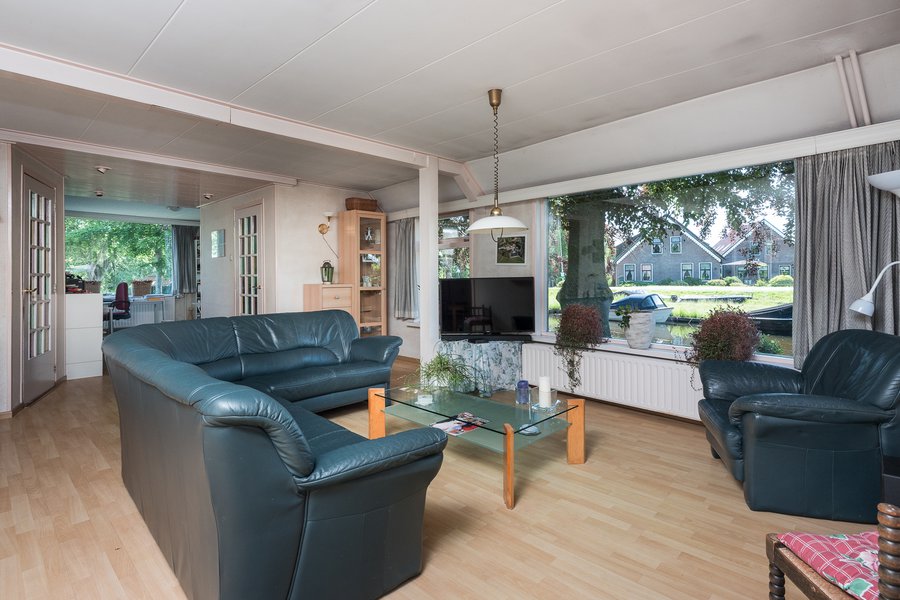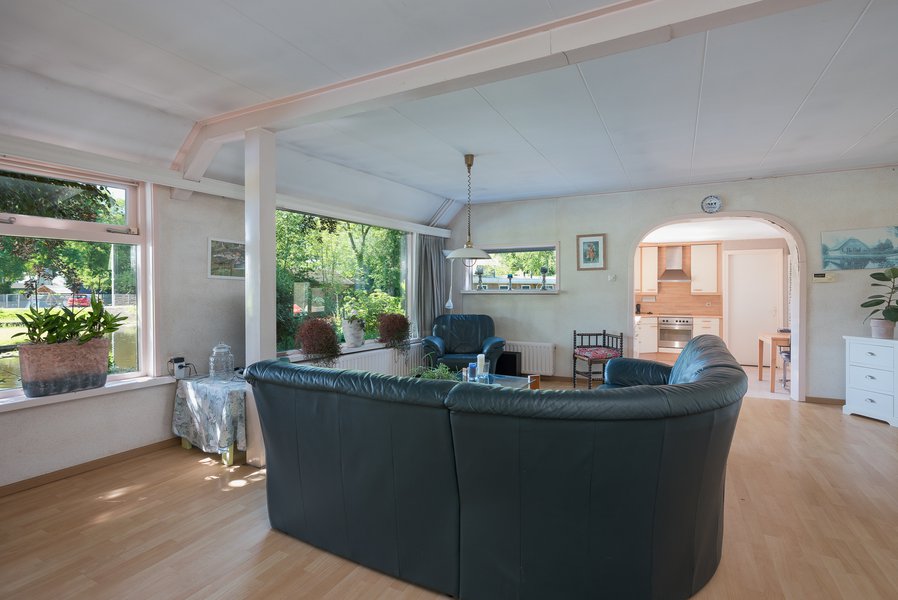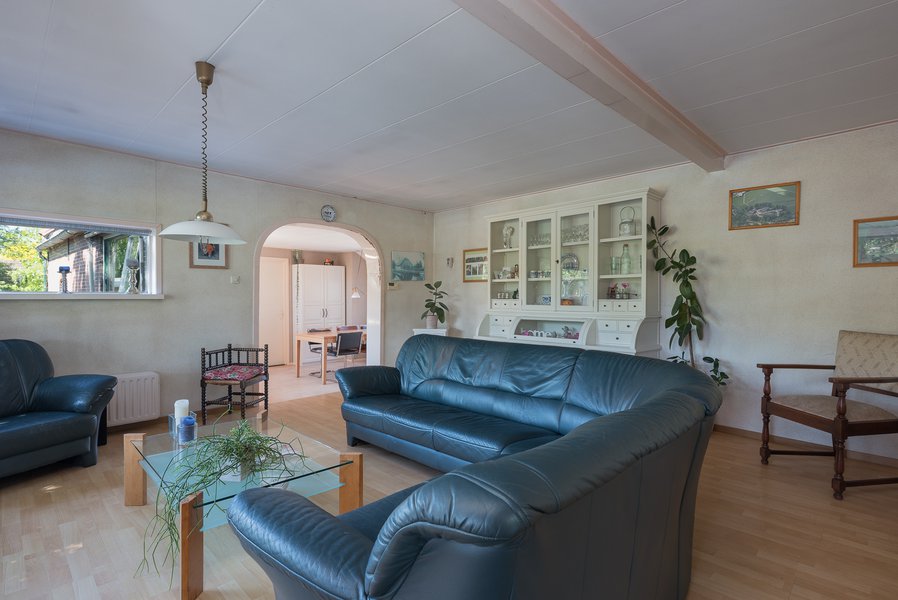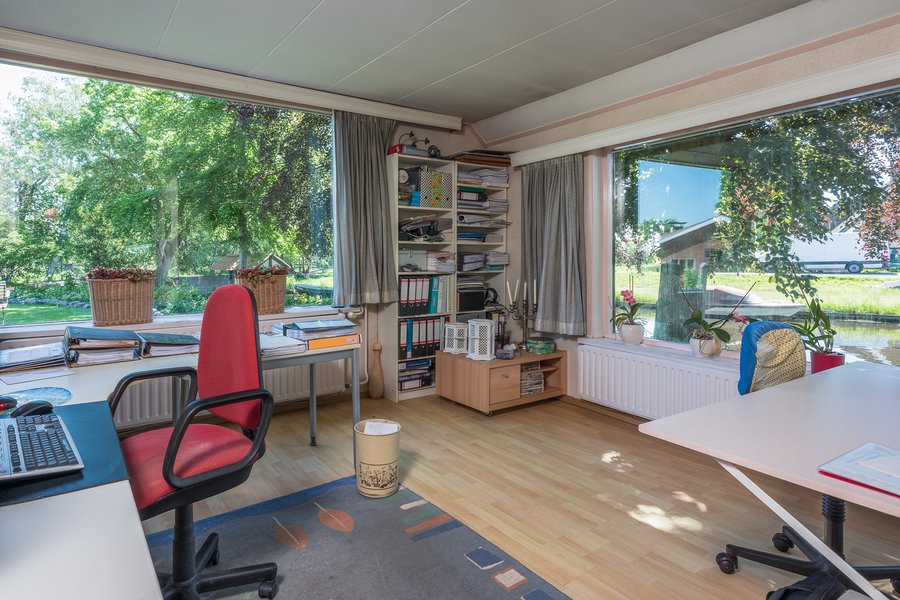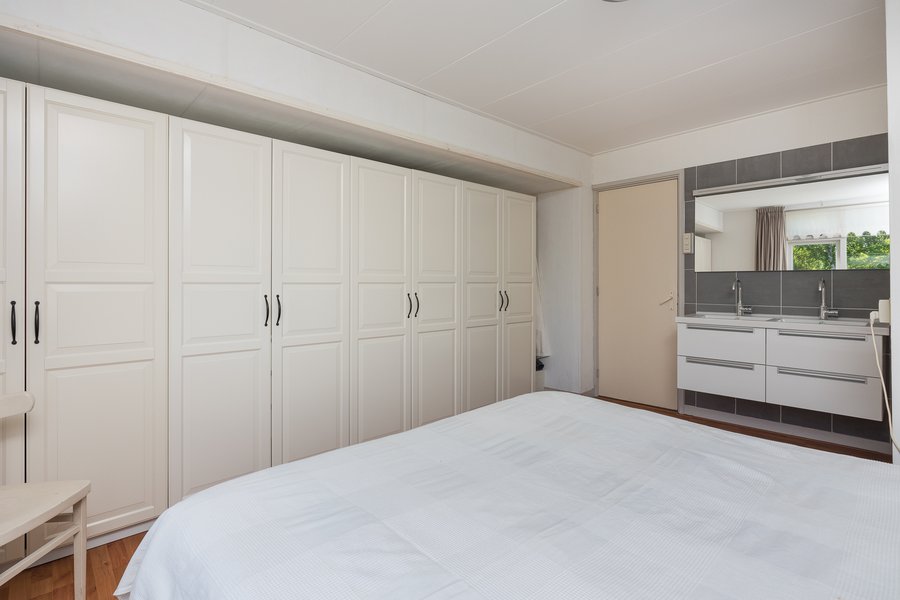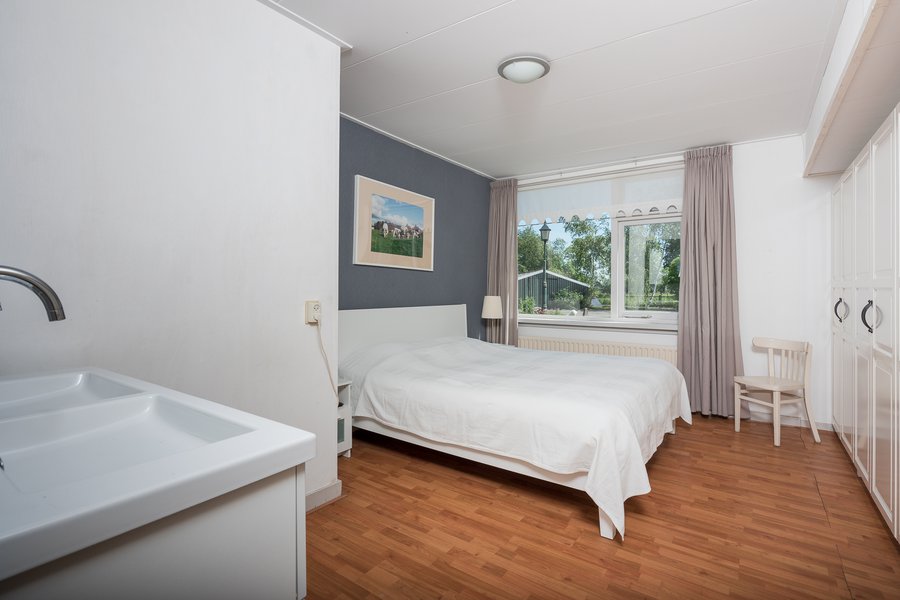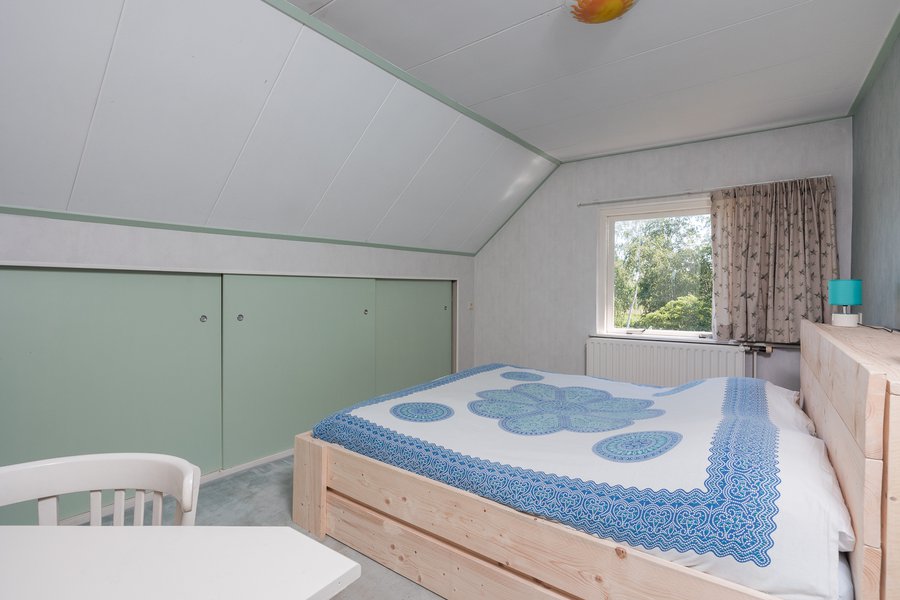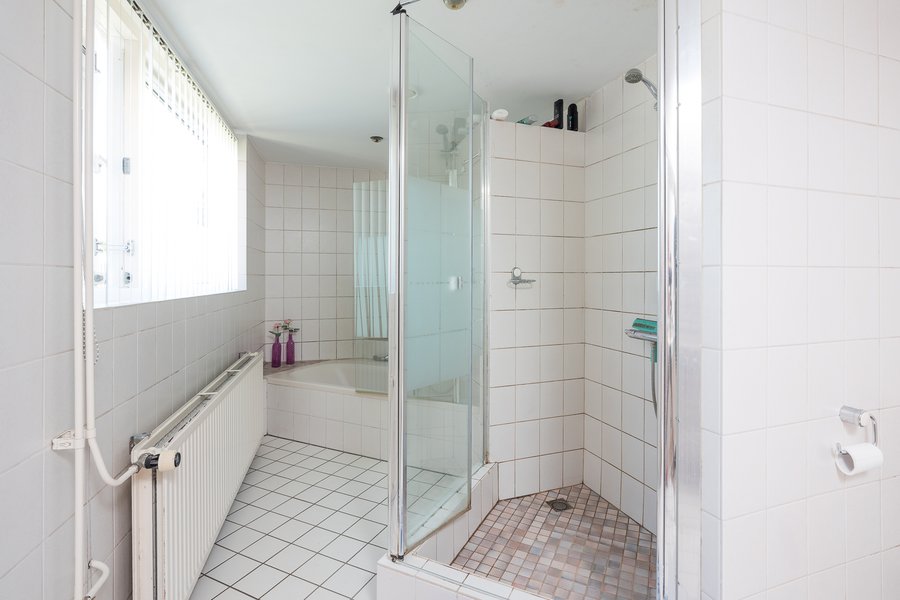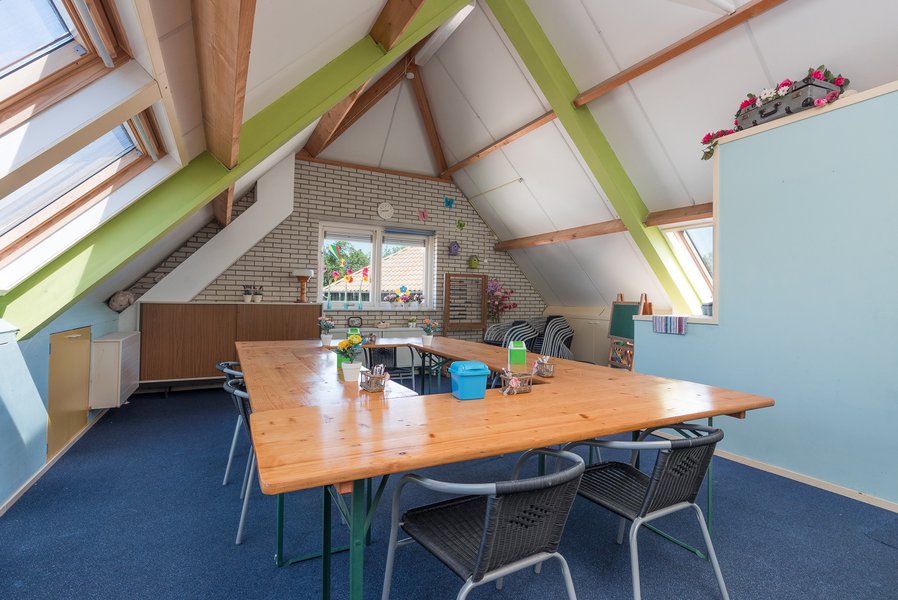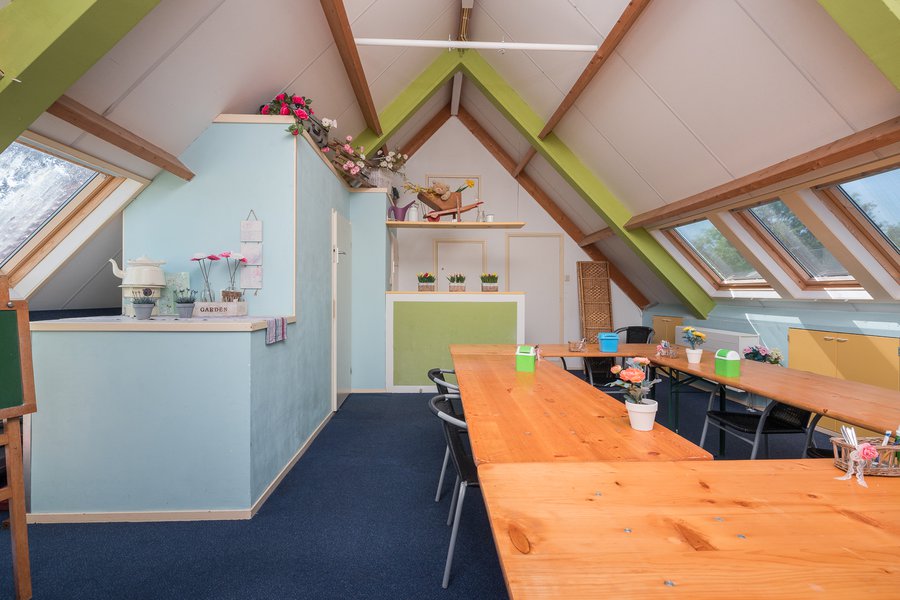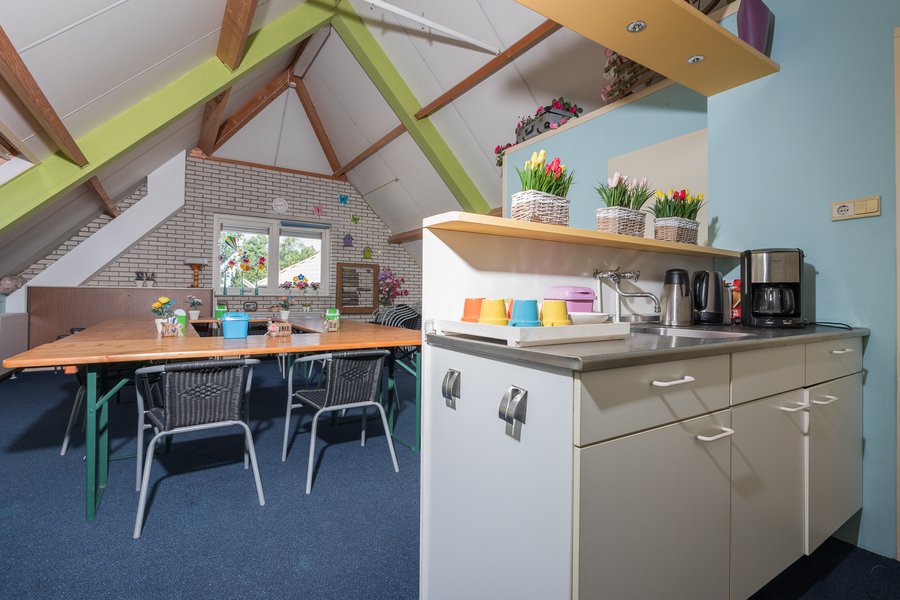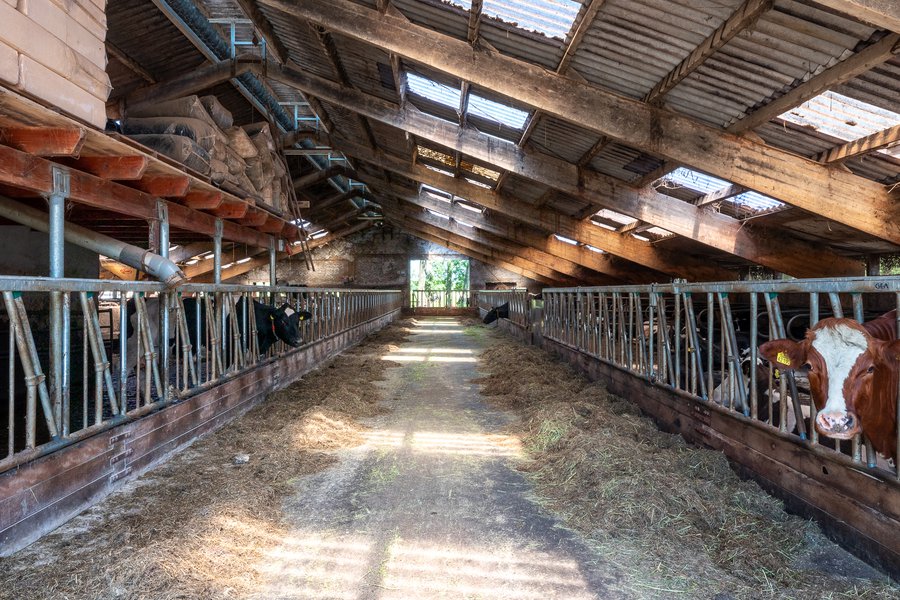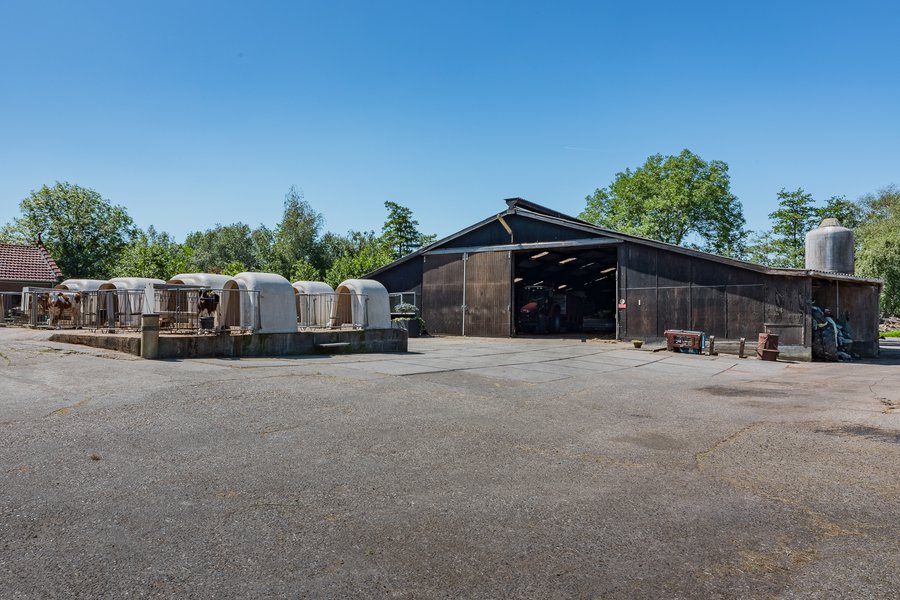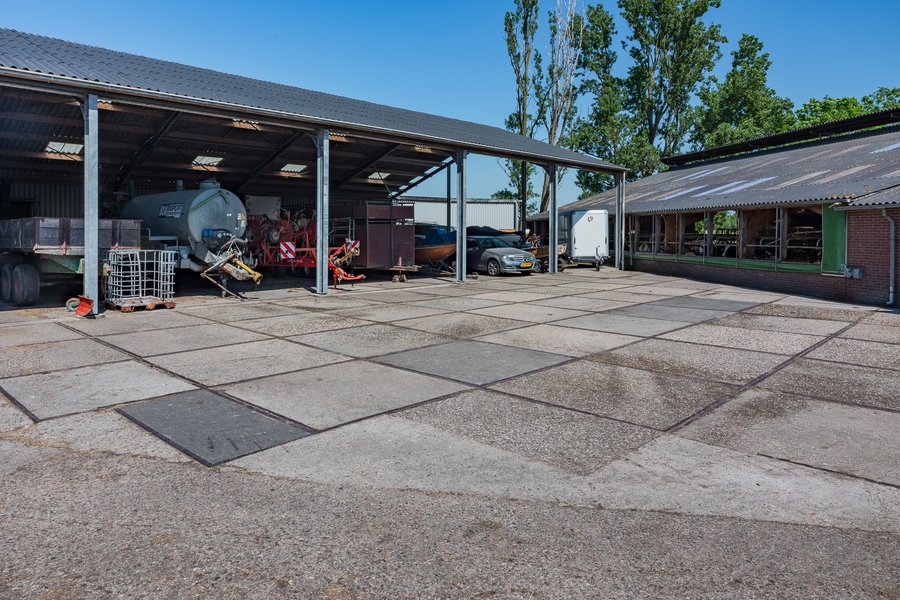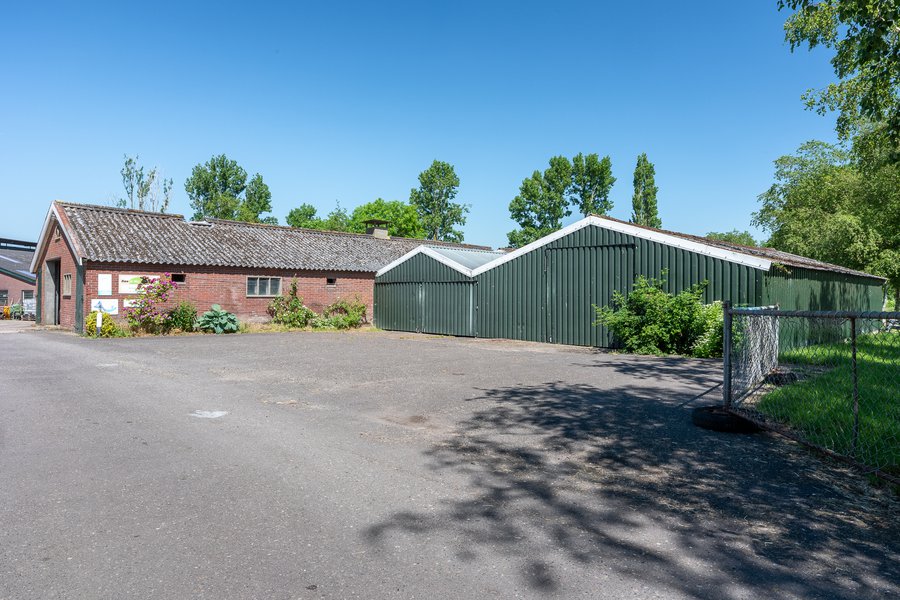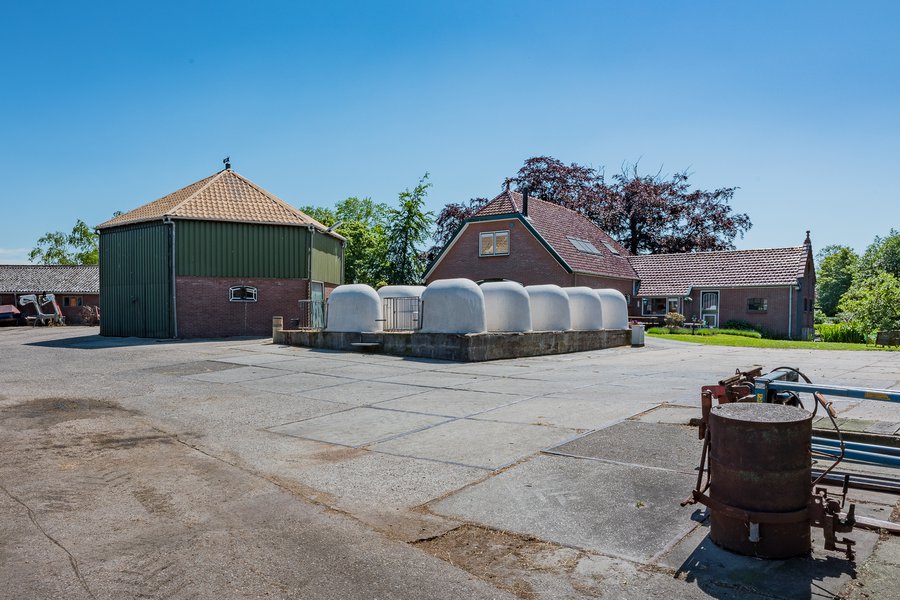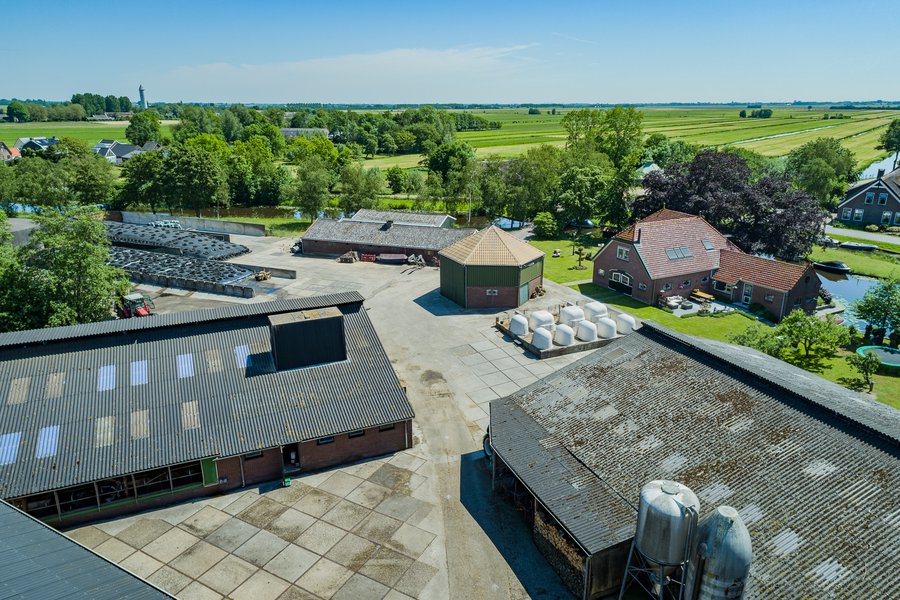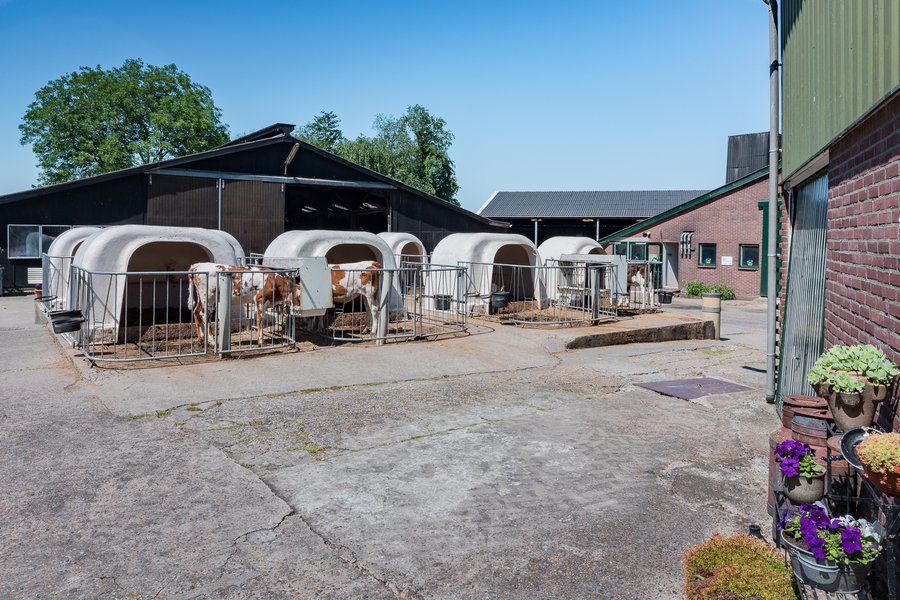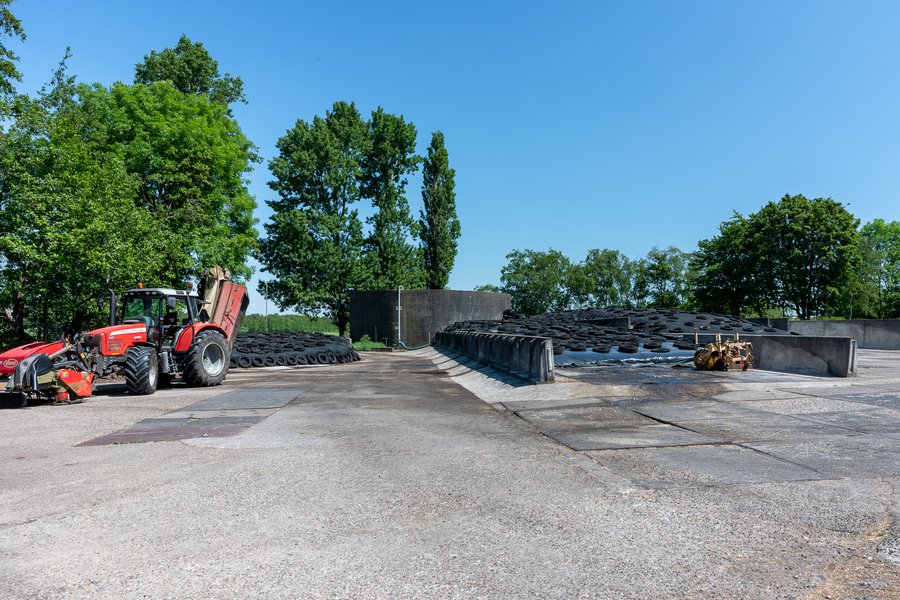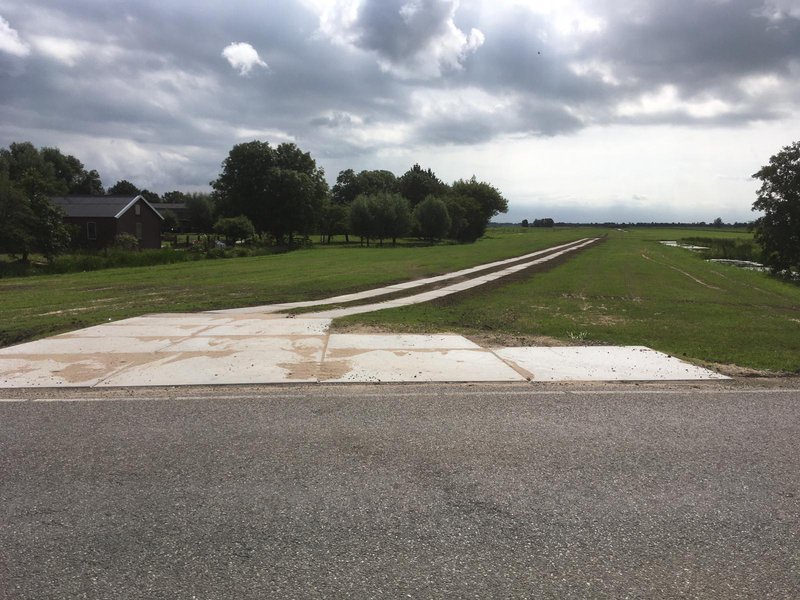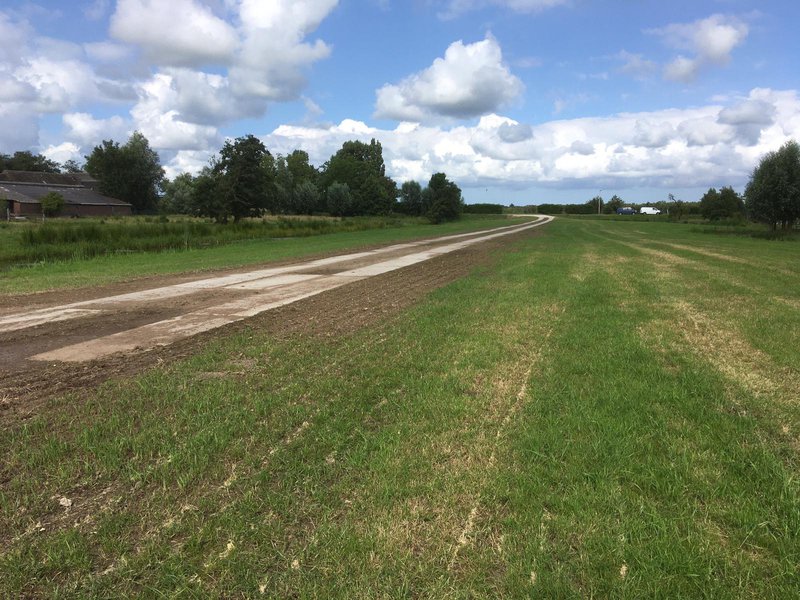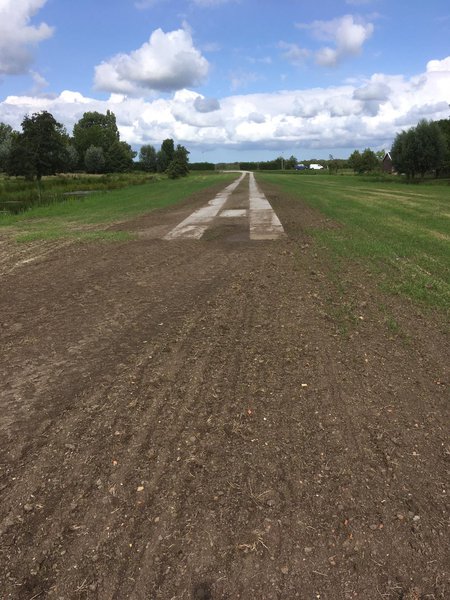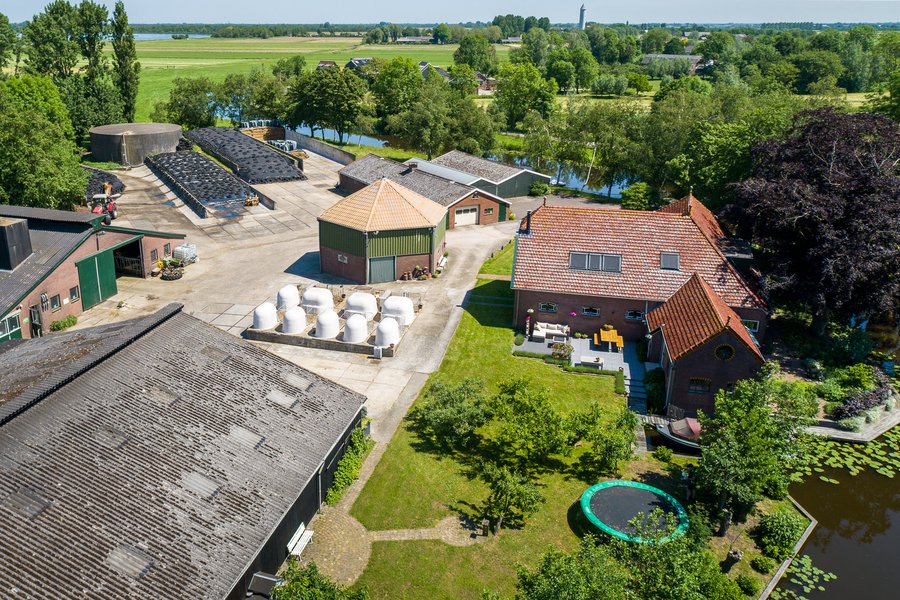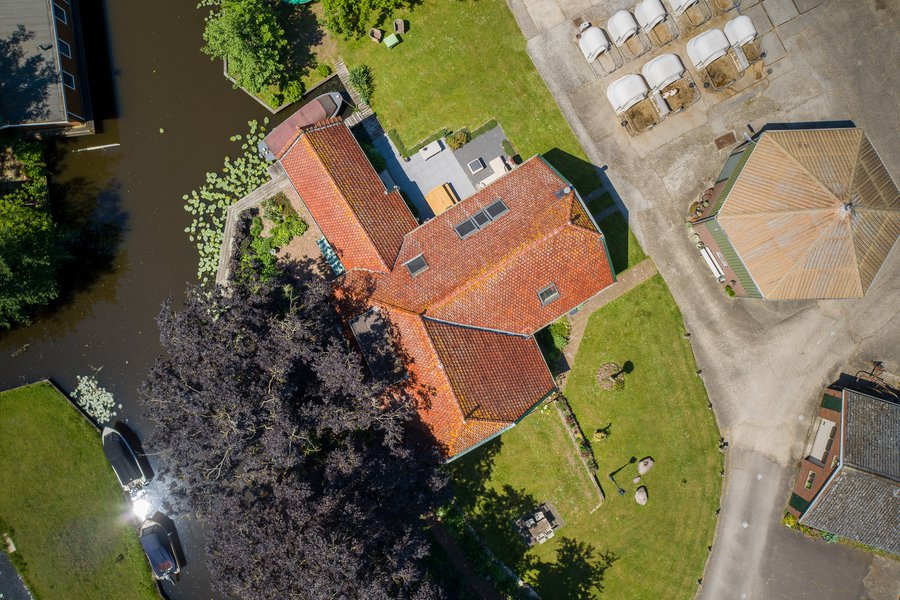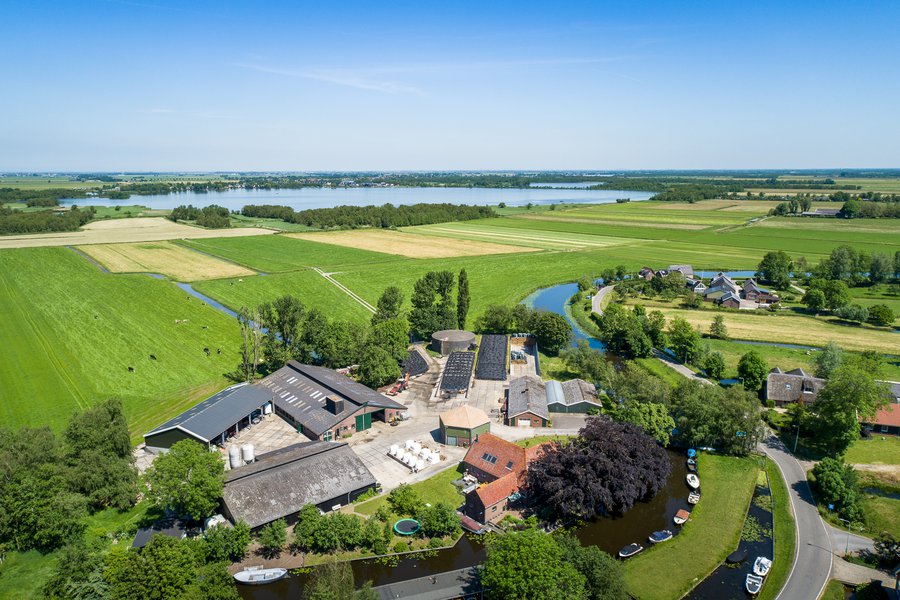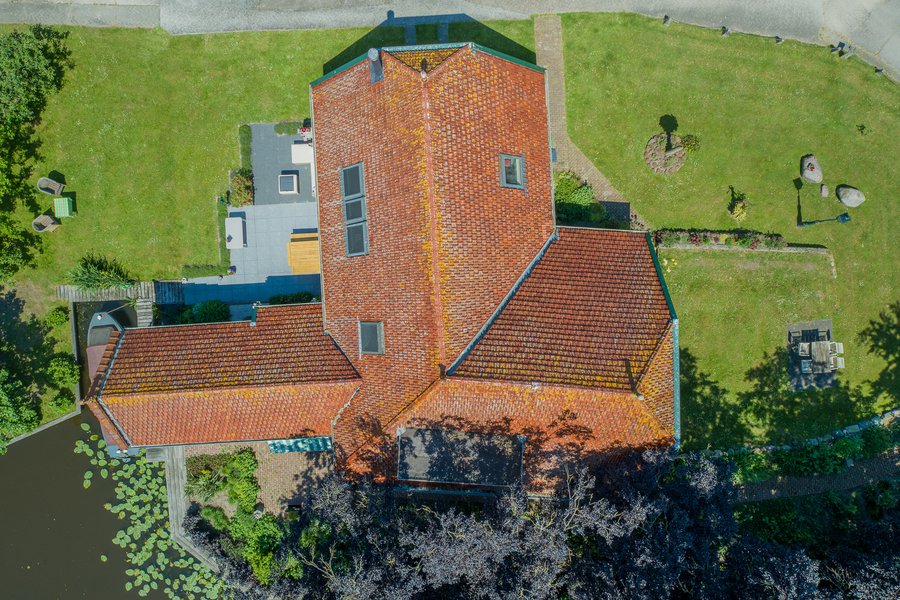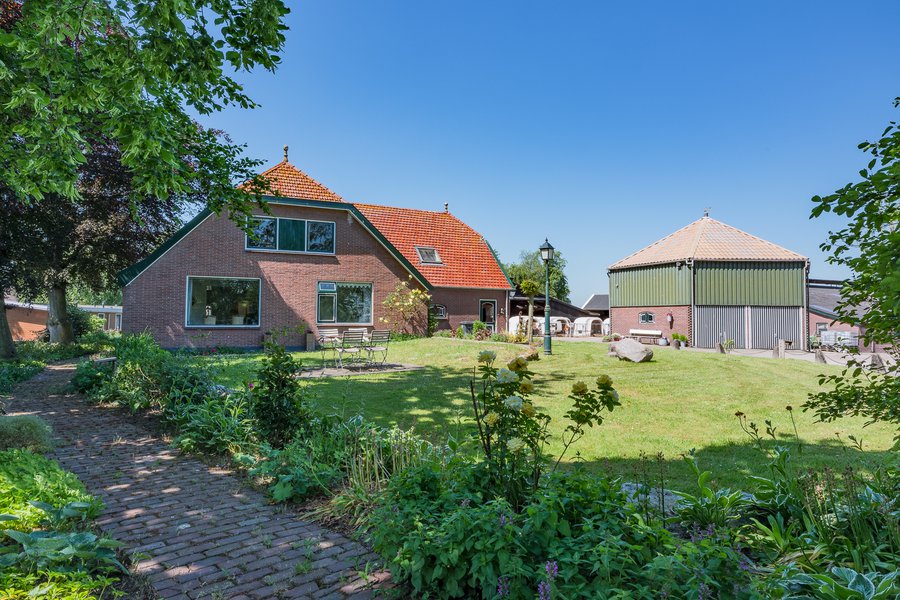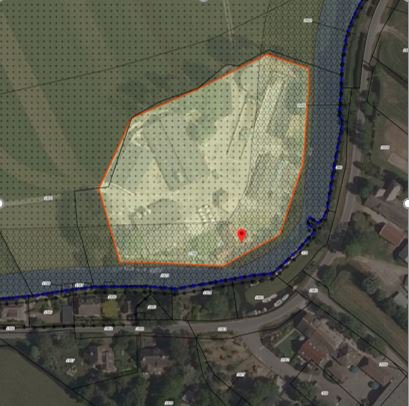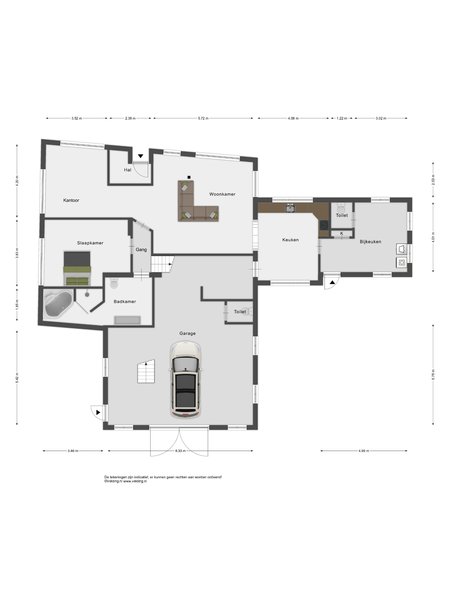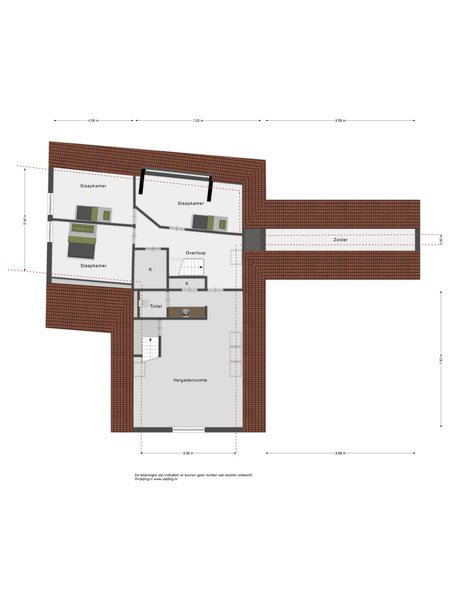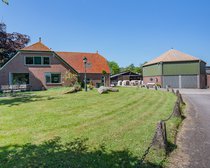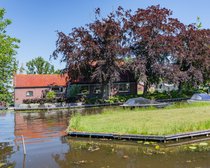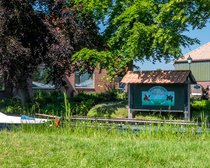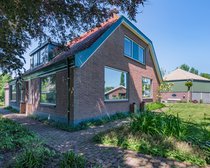Dairy farm, Nieuwkoop, South Holland
43.5 ha. price on request Sold Dairy
Nieuwkoop, Zuid-Holland, The Netherlands
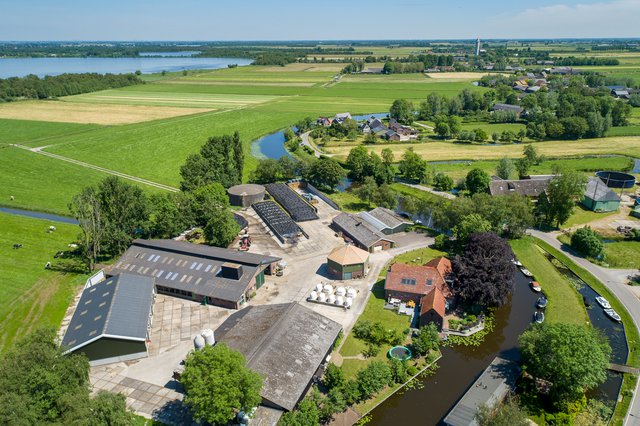
Beautiful dairy farm located at Meije 86 in Nieuwkoop, with a residence, free-stall barn, machine shed and approx. 43 hectares of cultivated land and associated rights.
Location
Beautifully situated on the Nieuwkoop side of the river De Meije. The bank of the Meije is clad over the entire length of the block, as well as the island in the Meije. There is an unloading ramp for trailers with boats and in various places the jetty is rented out for boats, depending on the buyer, this can be continued or terminated.
The location is reasonably easily accessible via the Meije, with roads N231, N11 and A12, located between Bodegraven and Nieuwkoop.
Area
The total area is 43,57.35 hectares of property, of which approximately 10,500 m² is a building block. In addition, approximately 7 hectares are leased on a liberalized basis.
Buildings
- Residence with garage (renovated in 1960 and 1990)
- Free-stall barn (built in 1980, up-to-date due to various renovations)
- Young cattle/sheep barn/workshop (built in 1983)
- Machine shed (year of construction 2011)
- Calf igloos on concrete floor with fences (built in 1995)
- Former haystack/storage (built in 1996)
- 3 Former pig barns, now storage (built in 1960)
- 4 silos (built 1994, 2004, 2008 and 2008)
- Manure silo of approx. 859 m³ (built in 1997)
- Fertilizer silo (year of construction 2000) and 3 feed silos (year of construction 1990)
- Fully paved yard with 3 lot paths in grassland
Company residence
The company house, built before 1900, was renovated in 1960 and 1990, and the garage was added. There is a garden area of approx. 1,500 m².
- Volume: approx. 1,137 m³
- Usable living area: approx. 240 m²
- Indoor space: approx. 87 m²
- Maintenance: Good
- Layout:
- Ground floor: hall, office and living room, kitchen, utility room with laundry area and toilet, hallway, bedroom, bathroom with washbasin, bath, shower and toilet, staircase
- First floor: landing, 3 bedrooms, closets, toilet, meeting room with pantry, attic space
- Heating: Nefit 2000 central heating system, wood stove in the garage
- Utilities: electricity, three-phase current, gas connection, water supply, fiberglass, pressure sewer
- Garage: attached garage with toilet and adjoining terrace with folding arm awning
- Canteen: canteen (meeting room) above the garage
Free-stall barn
Year of construction: 1980 with various renovations since 1986.
Well maintained.
Type: 3 + 1
Surface area: approx. 38 m x 22.5 m = 855 m² (841.25 m²)
Milking system: Milking robot Fullwood (year of construction 2013)
Capacity: 96 cubicles
Young cattle/sheep stable/workshop
Year of construction: 1983; renovated from 1990.
Surface area: approx. 24 m x 20 m = 480 m² (477.2 m²)
Machine shed
Year of construction: 2011.
Excellently maintained
Area: approx. 25 m x 15 m = 375 m²
Salvage
Year of construction: 1960; renovated in 1998.
Well maintained
Surface area: former pig barn of 196.91 m² and former milk barn of 187.25 m²
Former haystack
Year of construction: 1996.
Excellently maintained.
Surface: hexagon with attic, 78.59 m²
Young cattle shed
Year of construction: 1988.
Well maintained
Surface: 13 m x 3 m = 39 m²
Calf igloos
Year of construction: 1995
Storage
Manure silo, 4 trench silos, 3 concentrate silos, and a fertilizer silo.
Manure storage capacity in cellars and manure silo: 1,759 m³
Licensing situation
There is a 1983 Nuisance Act permit present, but no NB permit. An inventory has been made of the number of licensed animals on the reference date 10-06-1994 (designation Natura 2000 Nieuwkoopse Plassen & De Haeck).
The nitrogen reference has been mapped on the basis of registrations, construction drawings, and animal numbers. This shows that the nitrogen reference corresponds to 1606.2 kg of ammonia.
Numbers of livestock per phosphate rights (reference date 2 July 2015):
- Dairy cows: 76
- Young cattle (younger than 1 year): 29
- Young cattle (older than 1 year): 41
Land and subsurface
The real estate cadastrally belongs to a total of 43.57.35 hectares of land. It can be subdivided as follows:
- Subsurface house with residential area: 0.15.00 ha
- Yard and subsoil agricultural buildings: 0.90.00 ha
- House plot: 34.71.00 ha
- Field plot: 7.81.35 ha
Cultivation/crop plan and data
The joint area measured by the property land is 37.81 ha. It concerns all permanent grassland plots.
For the purposes of the Manure Act, the plots are partly classified as clay and partly as peat.
The plots have groundwater levels II = H < 40 L 50-80 or III = H < 40 L 80-120 (close to the Meije).
An irrigation restriction applies to all plots: watering ban on surface water
-
id1756
-
priceprice on request
-
size43.5 ha.
-
typeDairy
-
countryThe Netherlands
-
countyZuid-Holland
-
cityNieuwkoop
- show on map

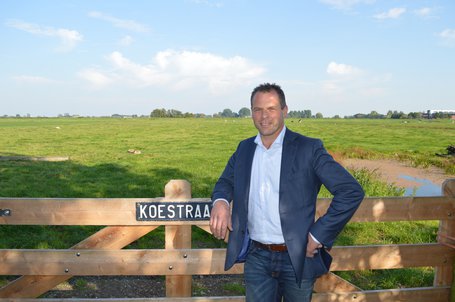
-
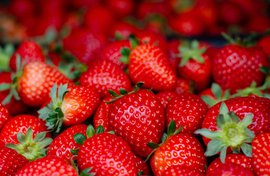 new
newAustralia, 275 Simpson Road Denbarker WA 6324
389.0 ha. Horticulture / Greenhouse...price on request (2535) -
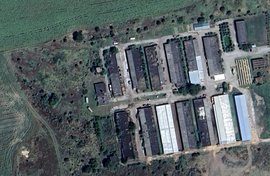 new
newBulgarije, Lom / Valchedram
320.0 ha. Cash crop...EUR 4,500,000,- (2532) -
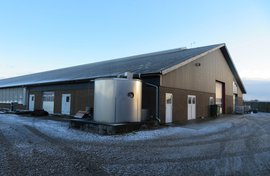 new
newDenmark, Farsø
55.6 ha. Dairy...price on request (2531) -
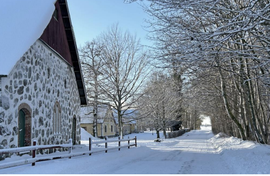 new
newSweden, Smedstorp
213.0 ha. Dairy...price on request (2530)
About The Netherlands
In the past centuries, not only nature has changed, but because of reduction and fragmentation of habitat, quality and quantity also deteriorated. Through nature management and activities of individuals the Dutch trying to turn the tide.
Agriculture is by far the largest user of the land area of the Netherlands. This makes agriculture vital to the rural area. In the period 1975-2003, the volume of total gross value added of Dutch agriculture has increased from 4.1 to 10.2 billion euros (2002 prices). In contrast, the share of agriculture in the Gross Domestic Product (GDP) over the same period decreased from 4.6 to 2.3 percent. The footprint of agriculture decreased the last thirty years by an average of 5 thousand hectares per year. Yet agriculture, with a current share of almost 60 percent in the total surface of the Netherlands, largely still defines the appearance of the Netherlands.
Expansion of agriculture means that entrepreneurs try to generate income from non-agricultural activities. These activities include agricultural nature and water management, agro-tourism and care farms. Currently, approximately 2 percent of the agricultural income derived from this type of activity.
The Netherlands has a temperate climate with mild winters and cool summers. The climate is influenced by the North Sea which moderates the temperature throughout the year, with both daily and annual temperature differences increasing towards the east.
De rol van de overheid ten aanzien van de verbreding in de landbouw is wisselend. De ontwikkeling van zorgboerderijen en agro-toerisme verloopt zonder veel overheidssturing. Bij agrarisch natuurbeheer is wel gekozen voor een sterke regie vanuit de overheid. Ongeveer de helft van de totale inkomsten uit verbreding van de landbouw is afkomstig uit agrarisch natuurbeheer.
Er zijn verschillende landbouwsubsidies voor boeren en agrarische bedrijven.
Bedrijfsovernamefonds voor startende boeren en tuinders
Er komt een extra financieringsmogelijkheid om startende boeren of tuinders te helpen de stap te maken naar een duurzaam en toekomstbestendig bedrijf. De Borgstellingsregeling Vermogensversterkend Krediet maakt het voor startende agrarische ondernemers makkelijker om op basis van een toekomstgericht ondernemersplan een lening aan te vragen.
Inkomenssteun via basisbetaling
Landbouwers die inkomenssteun via de basisbetaling willen ontvangen, kunnen jaarlijks de basisbetaling aanvragen via de gecombineerde opgave. Zij moeten wel voldoen aan bepaalde voorwaarden om voor inkomenssteun in aanmerking te komen. Zo moeten zij duurzaam en maatschappelijk verantwoord ondernemen.
Vergroeningsbetaling als aanvulling op basisbetaling
In aanvulling op de basisbetaling kunnen landbouwers in aanmerking komen voor een vergroeningsbetaling. In de volgende gevallen kunnen landbouwers in aanmerking komen voor een vergroeningsbetaling:
Als ze verschillende gewassen verbouwen (gewasdiversificatie). Dit is goed voor de biodiversiteit.
Als ze 5% van het bouwland inrichten als ecologisch aandachtsgebied. Het stuk bouwland levert een bijdrage aan de kwaliteit van biodiversiteit en milieu.
Als ze blijvend grasland in stand houden.
Extra betaling jonge landbouwers
Jonge landbouwers kunnen een extra premie ontvangen. Zijn de landbouwers in het jaar van de eerste aanvraag jonger dan 41 jaar? Dan kunnen zij hun aanvraag doen bij de Rijksdienst voor Ondernemend Nederland (RVO.nl). Met de premie kunnen jonge landbouwers investeren in grond, gebouwen, machines en verplaatsbare installaties.
Graasdierpremie
Laten landbouwers hun schapen of vrouwelijk vleesvee grazen op gronden die niet in aanmerking komen voor de basisbetaling? Dan kunnen zij een graasdierpremie aanvragen.
Borgstellingskrediet voor de landbouw (BL)
BL is voor landbouwbedrijven die de bank niet genoeg zekerheid kunnen bieden bij de afsluiting van een lening. De overheid staat met BL borg voor een deel van de bedrijfsfinanciering. Banken geven eerder een lening als de overheid voor een deel borg staat.
Vergoeding voor agrarisch natuurbeheer
Landbouwers die hun landbouwgrond natuurvriendelijk beheren, kunnen hiervoor een vergoeding aanvragen. Dit kan elk jaar van 15 november tot en met 31 december, via de regeling Agrarisch natuurbeheer (SNL).
Sommige boeren kunnen ook nog gebruikmaken van de regeling Kwaliteitsimpuls natuur en landschap (SKNL). Met deze regeling kunnen boeren hun landbouwgrond geschikt maken voor agrarisch natuurbeheer.
Tegemoetkoming premie brede weersverzekering
Agrarisch ondernemers met een brede weersverzekering kunnen een tegemoetkoming aanvragen voor de kosten van de verzekeringspremie. Dit kan via de tegemoetkoming premie brede weersverzekering.
Databank EU-subsidies landbouw
Wilt u precies weten wie er Europese landbouwsubsidie ontvingen? Dan kunt u dit nakijken in een databank met gegevens over landbouwsubsidies.
Het klimaat wordt beïnvloed door de Noordzee die het gehele jaar de temperatuur matigt, waarbij zowel de dagelijkse als jaarlijkse temperatuurschommelingen toenemen richting het oosten. In het noorden is de temperatuur gemiddeld over het gehele jaar iets lager dan in het zuiden. De kustprovincies in het zuidwesten, westen en noorden hebben in de herfst- en wintermaanden doorgaans zachter weer dan het oosten en noordoosten. In de zomer zijn het oosten van Brabant en uiterste noorden van Limburg de gemiddeld warmste plekken. De gemiddeld koudste maand is in de meeste plaatsen januari, de warmste maand juli.
Zonuren en neerslag
Met ca. 1650 zonuren heeft de kust de meeste zonuren, terwijl de Achterhoek met ca. 1500 uur de minste zonneschijn heeft. Ondanks het imago van regenland, regent het gemiddeld slechts 7% van de tijd. In de zomer is er vooral op grasland een verdampingsoverschot, maar gemiddeld is er jaarlijks een neerslagoverschot, het grootst op de Veluwe. Het natst zijn de Veluwe, Drenthe en Zuid-Limburg, het droogst het centrale deel van Limburg met minder dan 700 mm.
Weer
Het weer is sterk afhankelijk van de luchtsoort en de fronten die de verschillende luchtsoorten scheiden. Het meest voorkomend in Nederland is van de Atlantische Oceaan afkomstige maritiem polaire lucht die in de zomer vochtig en koud is en vochtig en gematigd warm in de winter. Bij een stormachtige noordwestenwind zorgt de maritieme Arctische lucht voor buiig, guur weer. Uit Rusland en Siberië wordt zomers warm en droge continentale polaire lucht aangevoerd. In de winter is deze koud en droog. Warme maritiem tropische lucht zorgt in de winter veel voor mist en in de zomer voor onweer. Continentaal tropische lucht is warm en droog.
De laatste vijfentwintig jaar is het aantal agrarische bedrijven in Nederland sterk gedaald. In 1980 waren er 144.994 landbouwbedrijven, daarvan waren er in 2019 nog 52.233 over. Ook het aantal mensen werkzaam in de landbouw is gedurende die jaren sterk afgenomen: van 265.467 in 1980 tot 196.000 in 2018.
Nederland is een op wereldschaal belangrijke exporteur van agrarische producten, ook al werkt maar 3% van de Nederlanders in de agrarische sector en is 2,2% van het bruto binnenlands product afkomstig uit de agrarische sector. De landbouw in Nederland heeft 2,2 miljoen hectare in gebruik. In 2015 was 54 procent van het totale landoppervlak van Nederland in gebruik voor landbouw.


